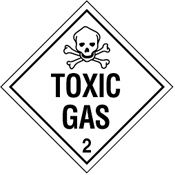 |
 |
| MSDS Topics |
Free Sites | FAQ's | Regulations | Glossary | Software | Suppliers |
| Books | Forum | Poll | Fun stuff | Quiz | Store | |
| MSDS and safety supplies | Search ALL our MSDS info | |||||
 | |||
 |
 |
 |
|
| Title: 09/09/1986 - Labeling of Formaldehyde-Containing Products Under the Hazard Communication Standard | |
| Record Type: Interpretation | Standard Number: 1910.1200(f) |
September 9, 1986
MEMORANDUM FOR ALL REGIONAL ADMINISTRATORS
FROM: JOHN B. MILES, JR., Director, Directorate of Field Operation
SUBJECT: Labeling of Formaldehyde-Containing Products Under the Hazard Communication Standard
Several parties have asked for guidance on the subject issue. The Hazard Communication Standard (HCS) does not establish a clear threshold for the inclusion of hazard warnings on product labels. The term "appropriate hazard warning" found under 29 CFR 1910.1200(f) is the determining factor in the standard's labeling requirements.
While it is not the Agency's intent to provide specifications that might erode the standard's inherent flexibility, it is necessary to establish guidelines to ensure uniformity in our enforcement evaluations of employer programs. Guidelines were published originally on May 16, 1986 and further refined recently on July 18 in OSHA Instruction CPL 2-2.38A and CPL 2-2.38A CH-1 (pages A-12 through A-18). The guidelines provide criteria that are summarized in Table 1 of the directive on page A-18. These guidelines establish the presence of a single valid, positive study showing human evidence of carcinogenicity as a sufficient basis for the inclusion of a carcinogen warning on product labels.
In a recent formaldehyde rulemaking proposal (50 FR 50412), the Agency considered the epidemiological evidence as suggestive based on a consideration of all available evidence. There are, however, several valid, positive studies showing human carcinogenicity. The following are examples (all exhibit numbers refer to the formaldehyde docket, number H225 and H225A):
|
In addition, formaldehyde has been tested and shown to cause cancer in three separate animal studies by CIIT (Exhibit 42-131), New Research (Exhibits 42-3, 42-4) and (Exhibit 73-146) Carcinogenicity has also been documented through several short term essays. Health professionals must employ a large measure of judgment when making decisions about the appropriateness of a label warning. They must keep in mind that the HCS is primarily an information standard and as such expresses an intent to disclose information rather than to withhold information. Accordingly label warnings stating the carcinogenic potential for formaldehyde will generally be required under the HCS. The specific words or phrases used to warn of formaldehyde carcinogenicity will vary. Compliance officers should expect to see warnings such as "CARCINOGEN," POTENTIAL CARCINOGEN," and "ANIMAL CARCINOGEN." Others will incorporate modifying statements such as "INCONCLUSIVE EVIDENCE OF HUMAN CARCINOGENICITY." Wide latitude should be permitted as long as the label being evaluated warns of the potential cancer risk. |  Get your handy DOT warning labels and placards at Safety Emporium. |
The official, public domain, OSHA version of this document is available at http://www.osha.gov/pls/oshaweb/owadisp.show_document?p_table=INTERPRETATIONS&p_id=19483&p_text_version=FALSE